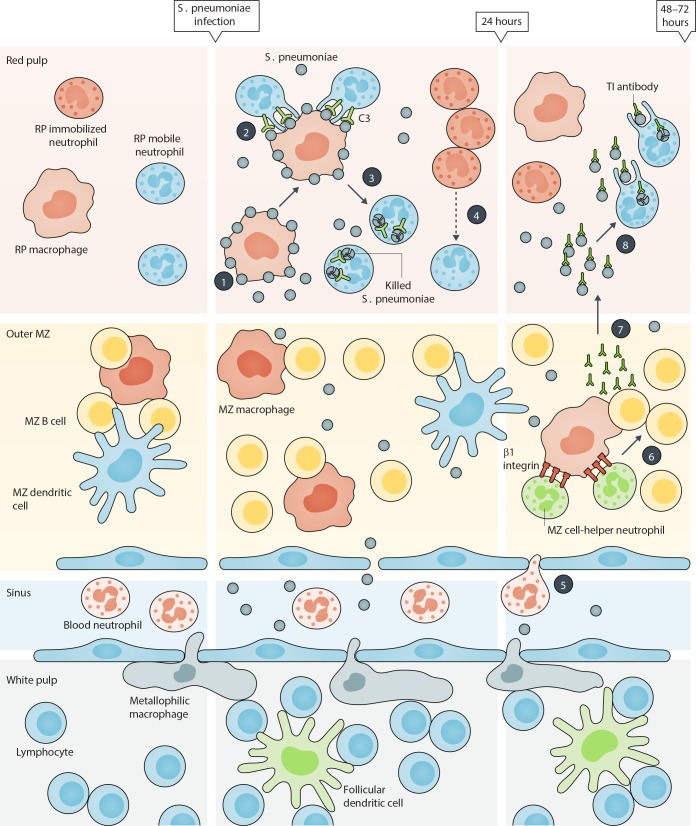Mechanisms whereby “specialized” neutrophil and macrophage populations fight S. pneumonia infection in the spleen of mice. The figure schematically illustrates the spleen’s anatomy. According to the results reported by Deniset et al. (2017), two main resident neutrophil populations locate in the RP of mouse spleen under steady-state conditions, mature Ly6Ghigh neutrophils (named as mobile neutrophils) and immature Ly6Gint neutrophils (named as immobilized neutrophils), respectively. The authors demonstrate that upon S. pneumonia infection, RP macrophages are responsible of the initial (e.g., occurring within 24 h) capturing of the bacteria (phase 1), which are then phagocytized by RP mobile neutrophils via complement-dependent mechanisms (phase 2) for partial clearance (phase 3). During this period, there is also a proliferation and expansion of RP-immobilized neutrophils, which locally differentiate to replenish the mobile neutrophil pool (phase 4). Blood neutrophils infiltrate the MZ of spleen between 24/48 h after S. pneumonia infection and establish firm interactions with MZ macrophages via β1 integrin–dependent mechanisms (phase 5). Later on, the newly recruited MZ neutrophils differentiate into B cell helper cells (phase 6) and sustain TI antibody production by MZ B cells (phase 7). TI antibodies, in turn, enhance the capacity of capturing the bacteria by RP mobile neutrophils for final pathogen clearance (phase 8).

An official website of the United States government
Here's how you know
Official websites use .gov
A
.gov website belongs to an official
government organization in the United States.
Secure .gov websites use HTTPS
A lock (
) or https:// means you've safely
connected to the .gov website. Share sensitive
information only on official, secure websites.
